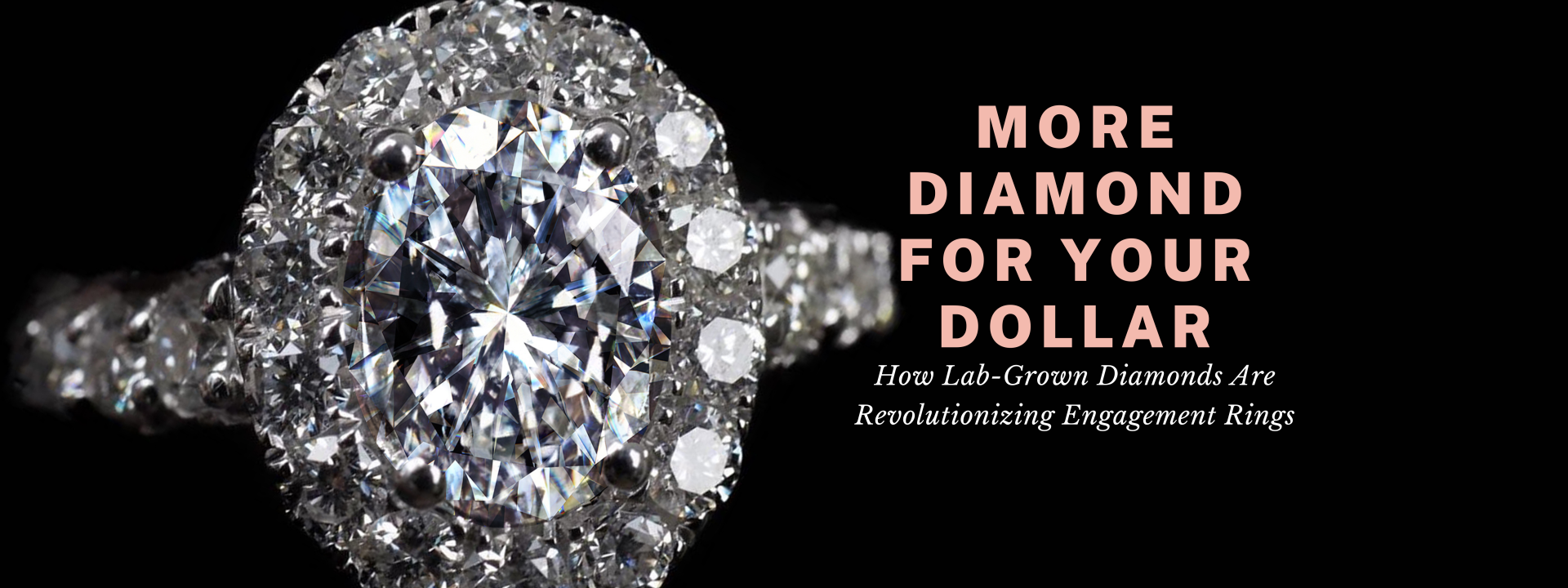Lab-grown diamonds have broken through the traditional diamond industry and have significantly increased in popularity. The lab-grown gemstones are virtually identical to traditional mined diamonds. They have the same optical, physical, and chemical properties as mined diamonds and look identical to the naked eye. Traditional diamond testers do not show any difference between lab-grown and mined diamonds. Only expensive specialized equipment typically only available in gemological laboratories can detect the difference. Lab-grown diamonds are also ethically sourced and more affordable than mined diamonds. General Electric (GE) produced the first lab-grown diamonds in the 1950s but it took decades of research to affordably create the lab-grown gemstones that are on the market today.

In 1797 scientists discovered that diamonds were made of pure carbon. Once this was known, scientists raced to create the first synthetic diamonds. Many attempts were made in the 1800s to recreate the conditions necessary for diamond formation in labs; however, scientists weren’t able to reproduce the experiments.
GE had a project codenamed “Project Superpressure” that resulted in the first proven synthetic diamonds in 1954. They used a high-pressure belt press and subjected small seed crystals to 2,912° F and pressure of 100,000 atm. In the experiment they dissolved another mineral made of pure carbon – graphite – in metals to speed up the conversion of graphite to diamond.
Because diamonds have a hardness of 10 (the highest on the Mohs Hardness Scale), they’re famous for wearing down or destroying metal tools. When the experiment’s resulting material broke the researcher’s tools, they knew they had made diamonds. Herbert Strong and Howard Tracy Hall received credit for the discovery.
The diamonds that GE produced were used for industrial purposes because they were too small for gem use. However, this early success led the way to their creation of gem-quality diamonds in 1971. They used a tube to add heat and pressure until a planted seed grew into a diamond.
While this was a momentous discovery, it was too expensive of a process to be competitive in the market. These early lab-grown diamonds also had lots of inclusions and wouldn’t have received high grades for the color and clarity standards that white and colorless gems require.
The scientists found out that an excess of nitrogen was causing the gems to become yellow in color. They made some adjustments and were able to create colorless diamonds. After a few decades of research, they were able to create diamonds in their labs that matched mined diamonds in carat, color, and clarity.
The first process used by GE was high pressure/high temperature (HPHT). This process was expensive and complex because it mimicked the necessary conditions that occur underground for diamond formation.
The most commonly used method today is chemical vapor deposition (CVD). Here, a diamond seed is heated with carbon gas inside a chamber, and this makes the carbon adhere to the seed and continue to grow into a larger diamond. This method is more controllable and less expensive since it takes place at a lower pressure and temperature, making it easier to produce large, gem-quality diamonds.
It took 30 years from the time that CVD was patented in 1954 to refine the process enough so that scientists could consistently produce gem-quality lab-grown diamonds at an economically competitive price. When they first started they could only use one seed at a time, but now the process has been updated so that dozens of diamonds can be grown at once.
Demand is increasing for lab-grown diamonds, even if they only represent a small part of the market so far. Many people are interested in ethically sourced diamonds, and lab-grown diamonds are a great alternative. But one of the best attributes of lab-grown diamonds is that they are currently priced 30-40% lower than mined diamonds. That means you can get a significantly bigger diamond for the same amount of money you’d spend on a mined diamond. And no one, not your jeweler or your friends, can tell the difference!
Leo Hamel Fine Jewelers carries a wide selection of lab-grown diamond jewelry, including engagement rings, right-hand rings, earrings, necklaces, and bracelets. Whether you’re about to get engaged or just want something sparkly for your own jewelry collection, you’ll find it at Leo Hamel’s! Visit our showroom on San Diego Avenue today and one of our friendly sales representatives will help you find just what you’re looking for.